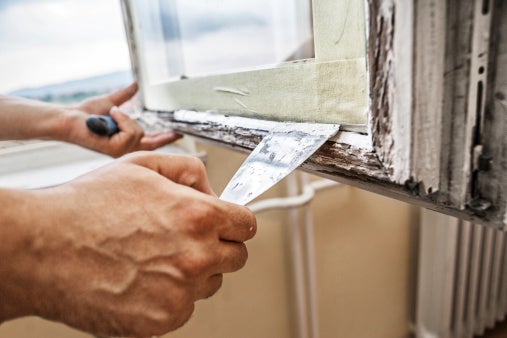A Guide for Protecting Our Children from Lead Poisoning
Earthjustice's Better Lead Policy toolkit offers three key practices for eliminating lead poisoning hazards before children are harmed.

This page was published 5 years ago. Find the latest on Earthjustice’s work.
Lead poisoning is a silent public health crisis, and the damages to children are irreversible.
This crisis is a matter of environmental justice that affects Black and Latinx children at disproportionately higher rates. Globally, one-third of children suffer from the effects of lead poisoning. The number of children in the U.S. with elevated blood lead levels is appallingly high.
Flint, Michigan became a tragic focal point of this crisis in 2014, when lead contamination poisoned the entire community. Today, sadly, there are children in hundreds of other cities with blood lead levels even higher than children in Flint.
To be clear, there is no safe level of lead in our blood.
Children younger than six are more susceptible to the effects of elevated blood lead levels. Even slightly elevated blood lead levels can lead to negative health outcomes, including loss of IQ points, cognitive delays, and attention deficit disorder.
Protecting children from lead poisoning is not difficult, but we need shared practices and clear policies to do it.
For years, Earthjustice has been fighting the scourge of lead poisoning. We are suing the EPA to lower its standard for acceptable lead in homes. Our attorneys have also advocated for New York to lower the blood lead level at which action is required to identify and address the source of lead in a child’s environment.
But in order to solve the lead poisoning crisis, we need policies that identify and address lead hazards before our children are poisoned.
That’s why we created www.BetterLeadPolicy.org.
This comprehensive tool provides community advocates with information on three types of “primary prevention practices” to address lead poisoning hazards:
For communities seeking to design and implement a proactive rental inspection program, we provide a Policy Generator — a roadmap that walks stakeholders through the key elements of a proactive rental inspection.
Along with the Policy Generator is a Cheat Sheet, which provides top-level information about the various choices for each program element.
Our Deep Dive section provides in-depth examples from more than two dozen communities around the country. These examples — of both successes and failures — show how and why certain program elements may or may not work in your local community.
We developed this tool to give communities information to design lead poisoning prevention programs that identify and remediate dangerous lead conditions before children are harmed — because we need to stop using our children’s blood tests as the primary means of identifying lead hazards.
When communities come together to design and implement lead poisoning prevention programs, their kids are the winners.
More than a decade ago, the Coalition to Prevent Lead Poisoning in Rochester, New York worked hand in hand with stakeholders from government, public health, housing, and education to design a lead poisoning prevention program that would work locally.
After these policies were put in place, lead poisoning rates in Rochester declined 2.4 times faster than the rest of New York state. In July 2019, Cleveland passed a historic lead poisoning prevention law within six months of the Lead Safe Cleveland Coalition pushing for change.
Earthjustice is committed to seeing the end of the lead poisoning crisis. Whether we’re bringing lawsuits or creating tools to help communities design better policies, we will continue fighting until this vision is a reality.
To learn more and get involved, please visit www.BetterLeadPolicy.org.
These resources were made possible with support from The New York Community Trust. Thank you to the Trust and the Lead Funders Action Network for its partnership and commitment to advancing the prevention of childhood lead poisoning.
Earthjustice’s Toxic Exposure & Health Program uses the power of the law to ensure that all people have safe workplaces, neighborhoods, and schools; have access to safe drinking water and food; live in homes that are free of hazardous chemicals; and have access to safe products.